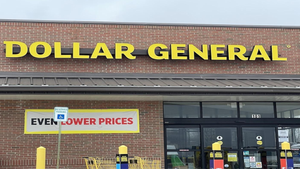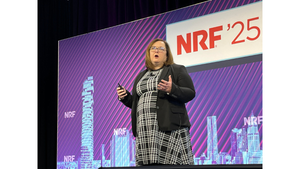IT Helps Foodland Cope With Challenging GeographyIT Helps Foodland Cope With Challenging Geography
NEW YORK — Located 2,500 miles from the continental U.S., and spread across four Hawaiian Islands hundreds of miles apart, the Foodland chain of 31 supermarkets faces more logistical challenges in keeping its shelves stocked than most U.S. food retailers.
January 30, 2012
NEW YORK — Located 2,500 miles from the continental U.S., and spread across four Hawaiian Islands hundreds of miles apart, the Foodland chain of 31 supermarkets faces more logistical challenges in keeping its shelves stocked than most U.S. food retailers.
“Supply is a challenge,” Robert Murphy, the chain’s chief information officer for the past nine years, told SN this month during a visit to the National Retail Federation’s Annual Convention & Expo here. “The majority of our products come across the water. And lead times are huge. We have a two-week turnaround compared to three days [on the U.S. mainland] for a meat order.” Distribution across Hawaii’s four main islands — The Big Island, Maui, Oahu and Kauai — also increases costs. “When people get sticker shock, there’s a reason,” he said.
Foodland is part of the Sullivan Family of Companies, Honolulu, which encompasses a group of independently operating businesses, including hotel gift shops and foodservice outlets. (Murphy serves as CIO for all of the Sullivan businesses.) Foodland’s banners include Foodland, Foodland Farms and Sack N Save.
IT systems have helped Foodland deal with some of its geographical complexities. For example, one comes from dealing with different vendors for items like Coca-Cola and tofu on different Hawaiian Islands. That is made manageable with a system called Master Data Management (formerly HQ), from RedPrairie, Alpharetta, Ga., which oversees item, vendor and pricing information and distributes it to stores.
 The application manages all information associated with items, from new item creation to changes in price and attributes (descriptions, pack size, etc). Vendors have the ability to enter new items and send item updates to the system via an online portal. “At last count we had about 100 vendors accessing that on a weekly basis to help us manage data,” said Murphy (left). Foodland uses this method to incorporate item changes in lieu of the GDSN (global data synchronization network) industry network.
The application manages all information associated with items, from new item creation to changes in price and attributes (descriptions, pack size, etc). Vendors have the ability to enter new items and send item updates to the system via an online portal. “At last count we had about 100 vendors accessing that on a weekly basis to help us manage data,” said Murphy (left). Foodland uses this method to incorporate item changes in lieu of the GDSN (global data synchronization network) industry network.
Master Data Management is linked to a store-based system from RedPrairie called Store Operations for Grocery (formerly Softgrocer), which manages, costs, pricing, inventory and receiving from direct-store delivery vendors. Stores in Hawaii receive a higher percentage of deliveries via DSD — largely from local vendors — than mainland retailers, said Murphy.
“We stress local,” he noted. “We partner with farmers and say if you grow this amount, we will buy it if it meets certain quality. We do that with pineapples, mango and tomatoes.” Hawaii grows more than 100 produce items and produces some meat, though most meat and national brands come from the mainland. The wide assortment is needed to cater to Hawaii’s diverse ethnic population, including a large Asian community, he added.
Store Operations for Grocery also handles store ordering and shelf-price auditing, which improves pricing accuracy. “We audit thousands of items each week for accuracy,” said Murphy. “The new release has a nice reporting feature that tells us where the errors are so we can correct them.”
Both Store Operations for Grocery and Master Data Management, under their previous names (Softgrocer and HQ, respectively), were developed by Softechnics, which RedPrairie acquired a year ago.
Foodland also employs an analytical application from Manthan Systems, Schaumburg, Ill., which is used to analyze item and category movement, profitability and other metrics. “Manthan gives us visibility on how an item is performing at stores that we didn’t have before,” said Murphy. “It helps us make better decisions on product selection.”
About the Author
You May Also Like






